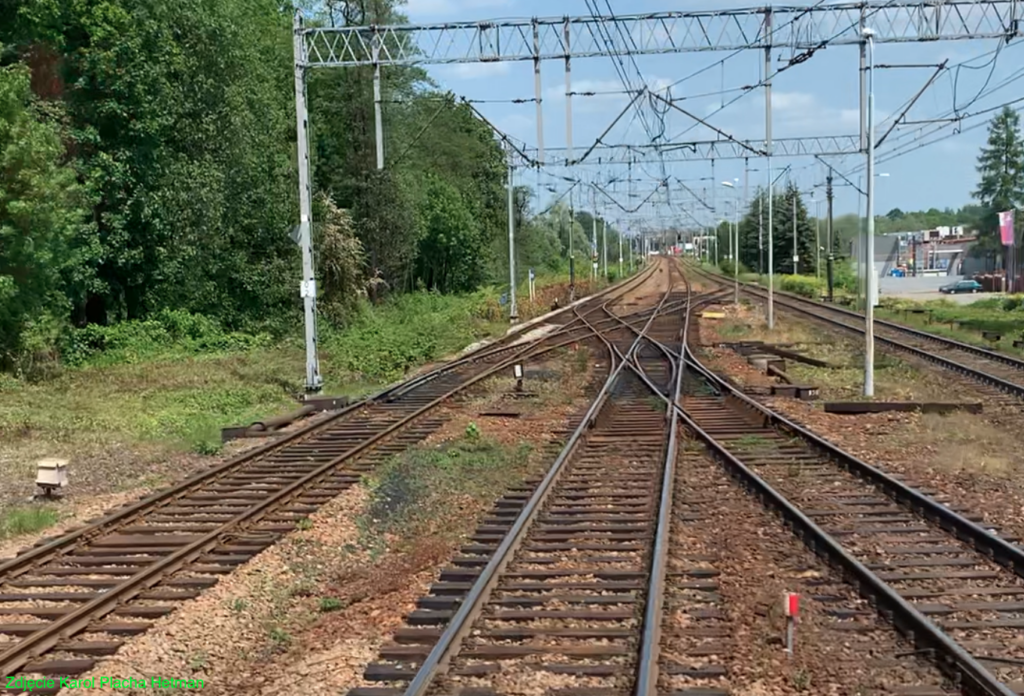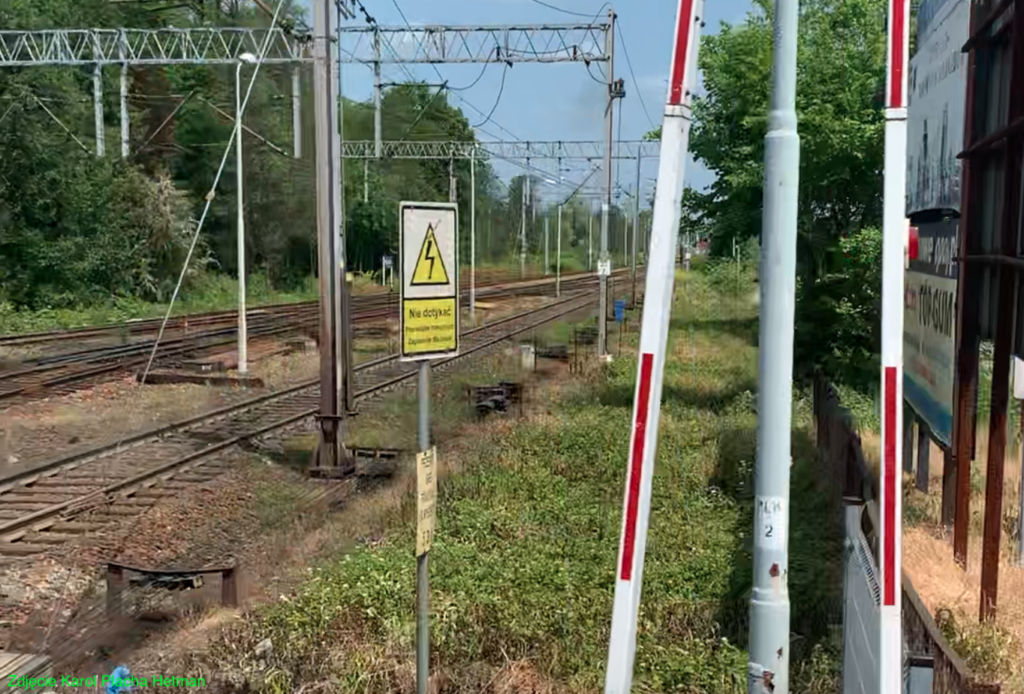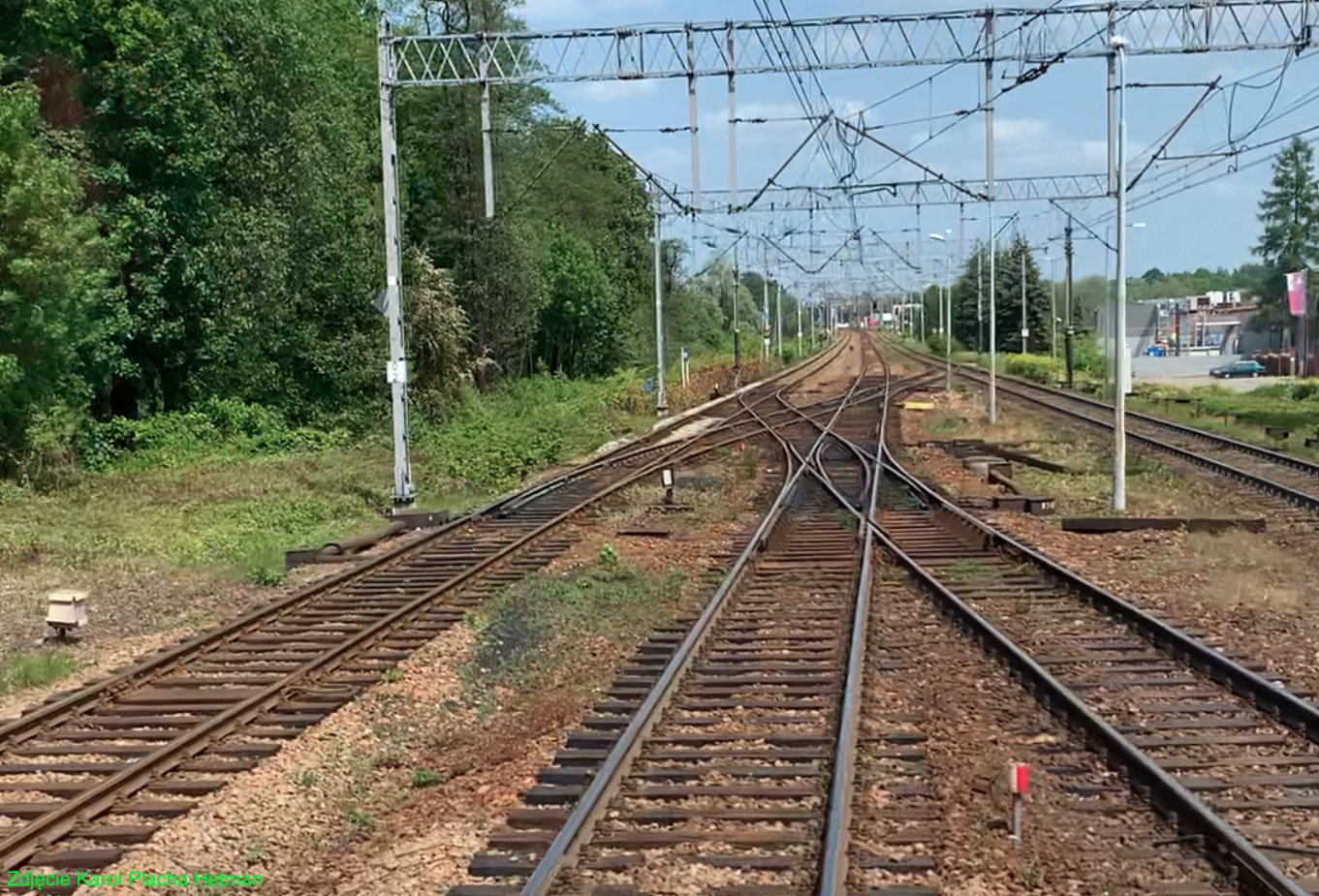Pszczyna 2023-08-30
Pszczyna Railway Station.
Geographic coordinates: 49.975N 18.953E. Elevation 232 m. Address: Plac Dworcowy 1, 43-200 Pszczyna.


City of Pszczyna.
Pszczyna is a city in Poland, in the Silesian Voivodeship, in the Pszczyna Commune. The city has a current population of 25,622 as of 2021. The city has an area of 22.49 square kilometers. Its altitude ranges from 240 to 293 meters. Pszczyna is called the Pearl of Upper Silesia. The main tourist attraction in the city is the Pszczyna Palace. The city lies in the Oświęcim Basin, near Lake Goczałkowice, in a heavily urbanized area.
The settlement received city rights in 1303. Historically, the city lies in Lesser Poland. Due to the fragmentation of the Pszczyna region, it fell under the rule of the Duke of Opole-Racibórz. Pszczyna was subsequently incorporated into Upper Silesia due to its industrial connections.
Road transport.
Road transport in the Pszczyna region is well-developed. The main road is Highway No. 1 E75; Gdańsk – Toruń – Włocławek – Łódź – Piotrków Trybunalski – Częstochowa – GOP – Pszczyna – Bielsko Biała – Zwardoń. There are also four provincial roads: No. 931 (Pszczyna – Jankowice – Międzyrzecze – Bojszowy – Bieruń). No. 933 (Rzuchów – Wodzisław Śląski – Jastrzębie-Zdrój – Pawłowice – Pszczyna – Miedźna – Brzeszcze – Oświęcim – Chrzanów). No. 935 (Racibórz – Rydułtowy – Rybnik – Żory – Suszec – Pszczyna). No. 939 (Pszczyna – Łąka – Wisła Wielka – Strumień – Zbytków).
Pszczyna Railway Station.
The railway station in Pszczyna (Pless) opened on November 15, 1868. The name Pszczyna appeared in January 1921, when the Pszczyna region was incorporated into Poland. After September 1, 1939, the name was changed again to Pless. However, on July 14, 1946, the name was changed again to Pszczyna. Pszczyna is a junction station. Railway line No. 139 runs through the station, and railway line No. 148 begins there.
Pszczyna station has a railway station opened in 1868. Both world wars spared the station from destruction. The last renovation of the station was completed in 2014. There is a shelter next to the station building. The station has ticket offices, restrooms, and a waiting room.
The station has two platforms. Platform 1 is a single-sided platform located next to the station building. Passenger trains depart primarily from this platform, heading towards Katowice, Zwardoń, Żywiec, and Bielsko Biała. Platform 2 is an island platform with two sides. Trains depart from this platform heading towards Katowice, Warsaw, Gdynia, and Zakopane. The platforms have bus shelters. Access to Platform 2 is via a footbridge over the tracks. Pszczyna station used to be a locomotive shed. Currently, the building houses a repair shop. The water tower is unused.
Railway traffic at Pszczyna station is handled by the “Psz” signal box, which also operates the barriers at the level crossing on Dworcowa Street. The signal box is located in the northern station head. The station also has the “Psz1” executive signal box, located in the southern station head. At this point, Bielska Street (provincial road No. 933) passes under a railway viaduct. The station is equipped with traffic lights. Trains of all categories stop at Pszczyna Station. Thirty-one passenger trains depart from Pszczyna Station daily.
There are nine train stations and stops in the Pszczyna area: Goczałkowice, Goczałkowice Zdrój, Piasek, Pszczyna Czarków, Kobiór, Radostowice, Suszec, Suszec Kopalnia, and Suszec Rudziczka.
Railway Line No. 139 Katowice – Zwardoń.
Railway Line No. 139 Katowice – Zwardoń is 113.695 km long and electrified. The maximum speed is 140 km/h. Most of the line is double-track. Pszczyna station is located at km 35.918 of the line. The line was constructed between 1852 and 1912. Electrification was completed between 1961 and 1986. In 1961, the Katowice – Katowice Ligota section was electrified, in 1963 the Katowice Ligota – Bielsko-Biała Główna section, in 1970 the Bielsko-Biała Główna – Żywiec section, and in 1986 the Żywiec – Zwardoń section. The Zwardoń – Skalité-Serafínov section was the last to be electrified, in 2002. The first Katowice-Ligota section opened on December 1, 1852. The Dziedzice-Bielsko Biała section opened on December 17, 1855. The Tychy-Dziedzice section opened on November 15, 1868. The Bielsko-Żywiec section opened on August 18, 1878. The Żywiec-Zwardoń section opened on November 3, 1884. The Ligota-Tychy section opened on November 2, 1912. In 1963, a second track was installed on the Katowice-Bielsko-Biała Główna section. In 1990, a second track was installed on the Bielsko-Biała Lipnik-Wilkowice Bystra section.
Railway Line No. 148 Pszczyna – Rybnik.
Line No. 148 Pszczyna-Rybnik was built in 1939. The line is 36.612 km long. The line was electrified in 1973 on the Żory-Rybnik section and in 1982 on the Pszczyna-Żory section. The line was renovated between 2017 and 2019.
Written by Karol Placha Hetman
